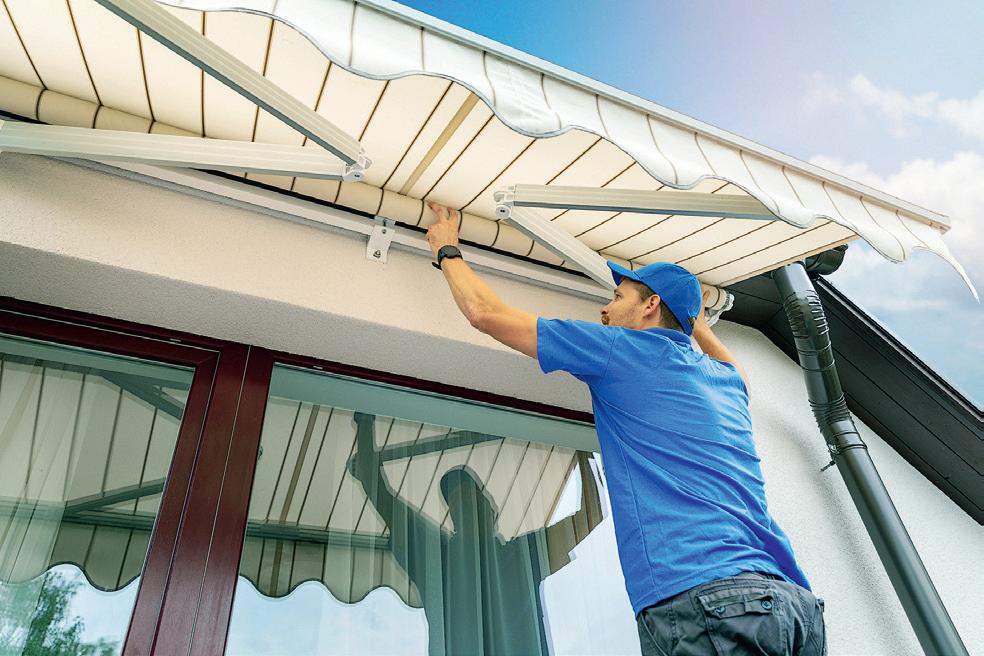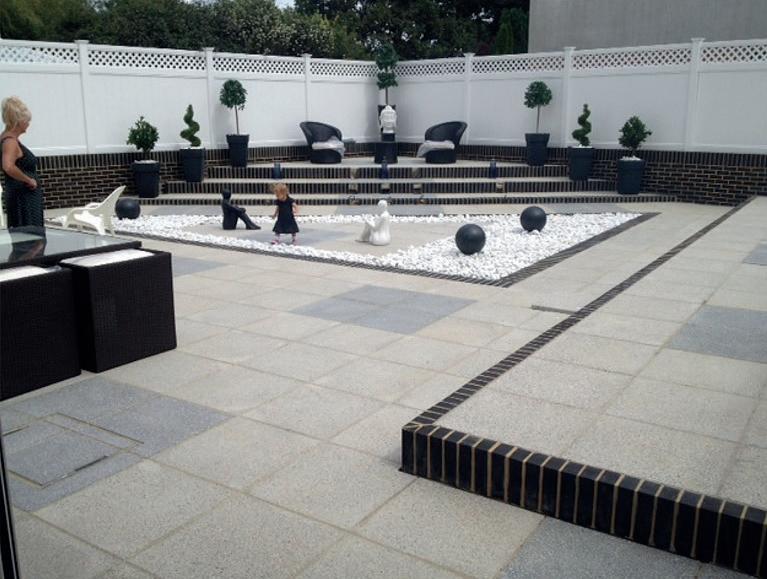
2 minute read
AN AL F r ESCO LIFE
By TrACEy ANdErSON
COULd yOUr PATIO BENEFIT FrOM AN AwNING?
Advertisement
while sitting relaxing on the patio outside our sitting room last summer, my teenager remarked suddenly, ‘we should totally get an awning!” I laughed, but he persisted, ‘Seriously, it would be great because this area gets too hot.” Idly I googled ‘patio awnings’ on my phone and rapidly warmed to the idea.
I had somehow always equated awnings with garish stripes and old-fashioned hardware stores! But the domestic awnings I was looking at were sophisticated, automated, and came with lights, heating and even wired-in outdoor music systems! with so many options, I’ve put together a guide to choosing the perfect awning.
• Measure up – your awning should be larger than the area it’s protecting, and wider than any windows or doors. Study the path of the sun across the space you want covered during the day to make sure the canopy is large enough to provide shade at all times. If the outdoor space is limited make sure that there is enough room for the canopy to unfold fully.
• Which type – There are three types of patio awnings: full cassette, half cassette and open cassette. A full cassette is the most expensive. It offers most protection for the fabric because it retracts into a closed unit, and is the neatest option, taking up the least amount of space. A half cassette offers protection for the awning’s cover and roller. An open cassette offers no protection but may be a good option for a tight budget.
• Choose your fabric – Acrylic is durable, easy to clean and is Uv-resistant but doesn’t allow good ventilation. Polyester is the cheapest option but degrades with exposure to Uv. Micro-perforated fabrics are a premium option. They are easy to clean, Uv resistant, durable, and breathable for good ventilation. A self-clean coating helps deter dirt and water from the surface of the fabric, preventing the growth of mould and algae.
• Manual or electric – Manual is much cheaper but a large awning can be unwieldly to open and close. An electric awning is easy to use at the touch of a button, and has the advantage that lighting and heating can be incorporated to extend its use.
• Planning permission – As patio awnings are not considered a permanent structure planning permission is generally not required. But you will need to check if your property is listed, or if you live in a conservation area. If in doubt, check.
• Weather – In the UK it’s likely your awning will get wet occasionally. Leave a wet awning to fully dry out before retracting away to minimise rippling in the material. Fully retract an awning if severe weather is predicted.
• Fitting – while it’s possible to fit an awning yourself, it’s often more cost effective long-term to call in the experts. They will make sure that your installation goes smoothly, and you end up with a practical, stylish patio awning which will allow you enjoy a more al fresco lifestyle this spring and summer.
To contact FELPHAM IN FOCUS please email: office@infocusmagazines.co.uk





28 Felpham in Focus










